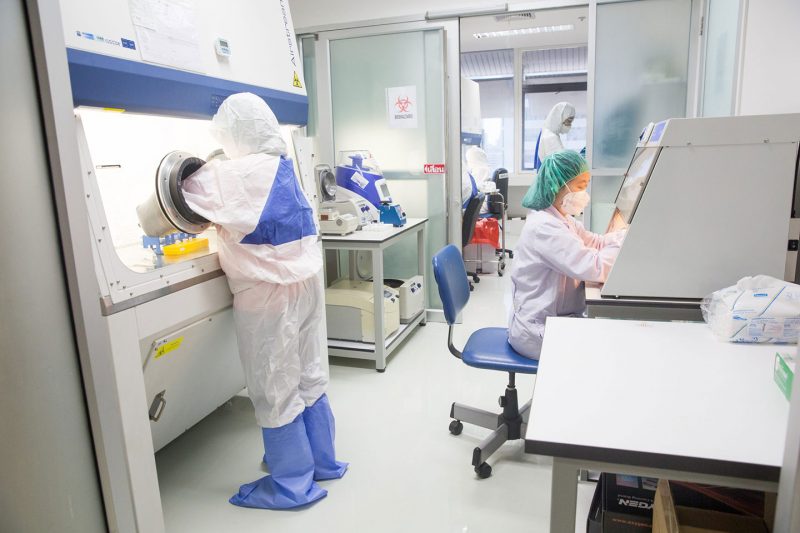Demonstration School Project offers new opportunities to Nan farmers
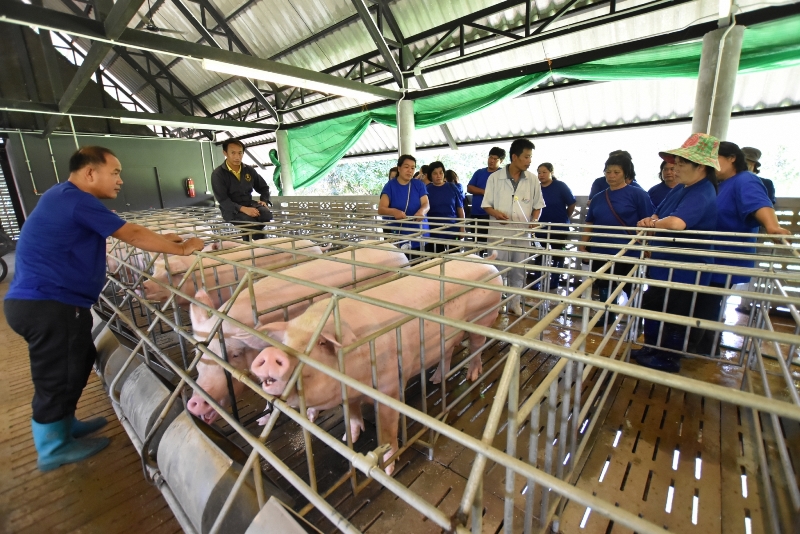
Abstract terms such as “sustainable development” or “food security” might not mean much to rural people such as 61-year-old Saowaluck Kanchon of Wiang Sa district in Nan province. The relevance of such concepts to her community might seem difficult to grasp.
However, receiving a pair of piglets to breed from the Integrated Pig Farming Demonstration Project has helped Saowaluck understand the concrete meaning of those words: sustainable development allows smallholder farmers like herself to make an independent living.
Saowaluck grows rice on a rented paddy field. She entered a training program in pig farming hoping to earn a second income to help sustain herself and her family.
After she completed the training, she received a pair of piglets, one male and one female. After her first attempt at breeding a litter, she has now sold the male piglet to secure funds necessary to raise the remaining female pig, which will require another eight months before it can give birth to offspring.
Saowaluck was one of 70 participants in the first year of the Integrated Pig Farming Demonstration Project launched by the Centre of Learning Network for the Region (CLNR) of Chulalongkorn University. An earlier project had provided free artificial insemination of swine to local farmers but soon expanded into an integrated pig farming demonstration school.
Chusilp Saratna, president of the Hug Muang Nan Foundation, has witnessed and taken part in this initiative in recent years. “It has profited local farmers immensely,” he says.
“The project follows the intentions both of the university as well as the Hug Muang Nan Foundation, which are to give farmers an alternative source of income through pig farming.”
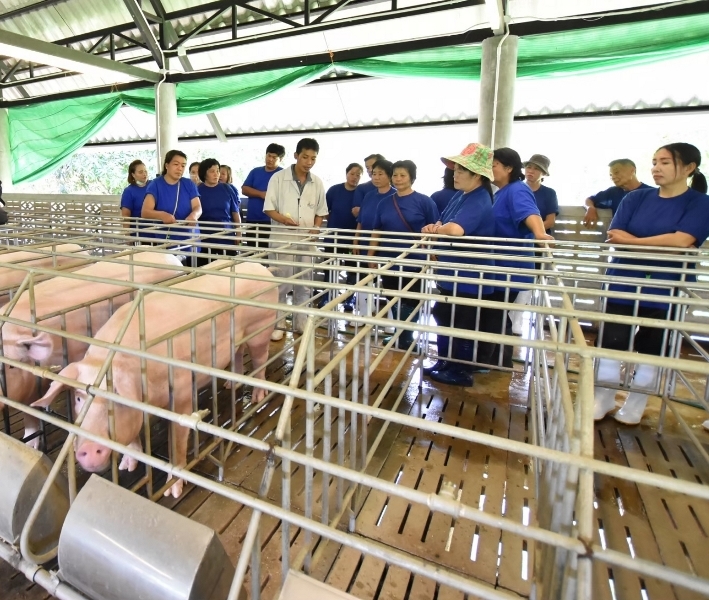
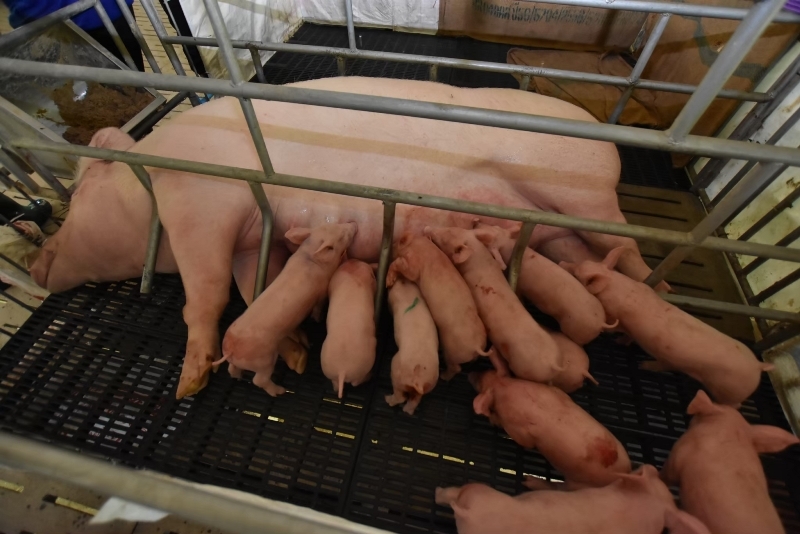
In the past, many farmers were proficient at breeding pigs, but the inherited know-how they possessed was not always on par with generally accepted standards. New knowledge imparted by a team of experts from the university includes recommendations on how to preserve pigs’ general health, how to select appropriate breeders, and which raw materials found locally make the best animal feed.
“What makes me happiest is seeing young people, the next generation of farmers, take part in this program,” says Chusilp.
The Hug Muang Nan Foundation has partnered with the CLNR to draw farmers into the project, which coaches them on how to raise and breed pigs. Once they have completed their training, the center — through the foundation — allocates them a pair of piglets each.
“It is akin to a learning center located in Nan, where knowledge and suitable technologies are developed and transferred to local farmers and students interested in pig farming,” says Nantarat Prabnok, acting director of the Saraburi working group of the CLNR.
The CLNR has a continuous curriculum providing training in the artificial insemination and breeding of pigs.
“With the demonstration project, however, we have seen that farmers who took part in the training program were able to effectively turn the knowledge they received into a professional activity,” Nantarat adds.
“Once you have completed the training, you still need enough funds to secure piglets before you can start breeding. This is a real hurdle for a lot of our students, who have financial difficulties.”
A solution was found quickly as the Integrated Pig Farming Demonstration Project itself has a number of livestock destined to serve as breeders. Organizers decided to use the semen from those pigs for artificial insemination and breed piglets that would then be given to students graduating from the program.
The results they obtained met their objectives, which were not only to enhance efficiency in pig farming, but also to reduce poverty and social inequalities by providing employment to farmers. Participants would also use their acquired know-how to further develop their communities.
The CLNR has provided swine semen for artificial insemination, as well as organized training sessions for smallholder farmers since 2006, helping more farmers to make an independent living. Their goal has been to build sustainability and food security in accordance with the Nan provincial strategic plan. The Centre therefore launched the integrated pig farming demonstration school, providing hands-on instruction to local farmers, students and other young people with limited access to education.
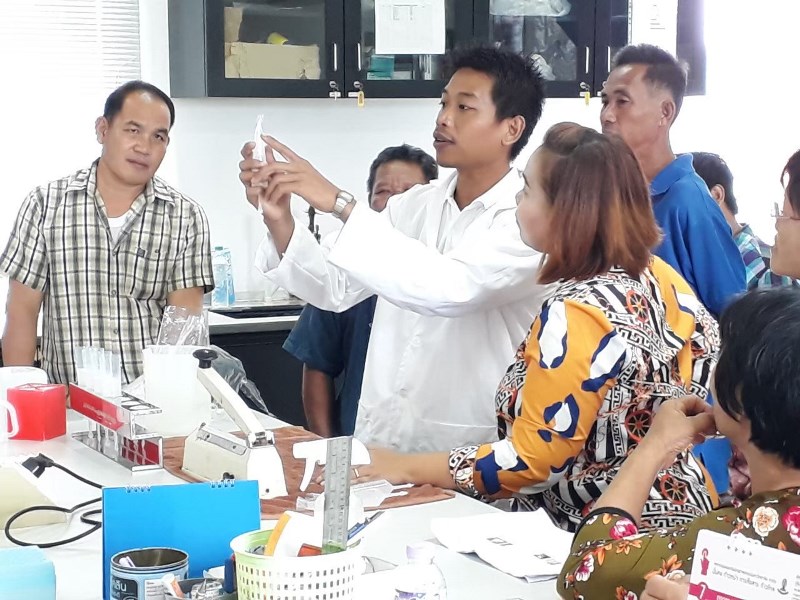
“Our ideas could be carried out in concrete form thanks to the help of the Hug Muang Nan Foundation, a resilient local association that provided assistance in allocating piglets to graduates of the program,” says Nantarat.
When CLNR personnel began to explain their objectives, they found that the foundation had been working locally on solving the same issues.
Each farmer now receives a pair of piglets — a male and a female — which they are trained to raise. When the piglets reach maturity, they can be artificially inseminated and the farmer may sell their grown pigs.
Once the farmers are able to breed a litter, they must give piglets back to the Integrated Demonstration School Project, which will allocate them to new graduates. Therefore, there is a continuous supply of piglets for new participants year after year, creating sustainability.
For Saowaluck, while some steps in the breeding process are effortless, others prove more challenging.
“However, this operation provides a steady income. It’s like putting your money in the bank,” she says. “It also makes for fun activities to do with your neighbors — feeding the pigs, cleaning the sheds, for instance.”
Since they had difficulties finding enough space to properly raise their pigs, Saowaluck and her neighbors have chosen to farm them together. They have selected a house with good access to water, making it easier to clean the sheds and wash the animals.
“I wish I could have a second training session, to go over some of the training tips again,” she adds.
Whenever she encounters problems with her livestock, such as pigs getting diarrhea or injuries, she calls the veterinarian at the Centre.
Saowaluck is particularly grateful that the personnel from the Centre are never far away. “We don’t feel deserted or abandoned in any way after the training and can always call. They’re all so friendly as well.”
The Pig Farming Demonstration School, under the Integrated Pig Farming Demonstration project, has a basic pig farming curriculum, as well as further training in determining heat periods, artificial insemination, and providing pig feed, as well as semen collection. Participants take 86 hours of classes providing both theoretical and practical knowledge.
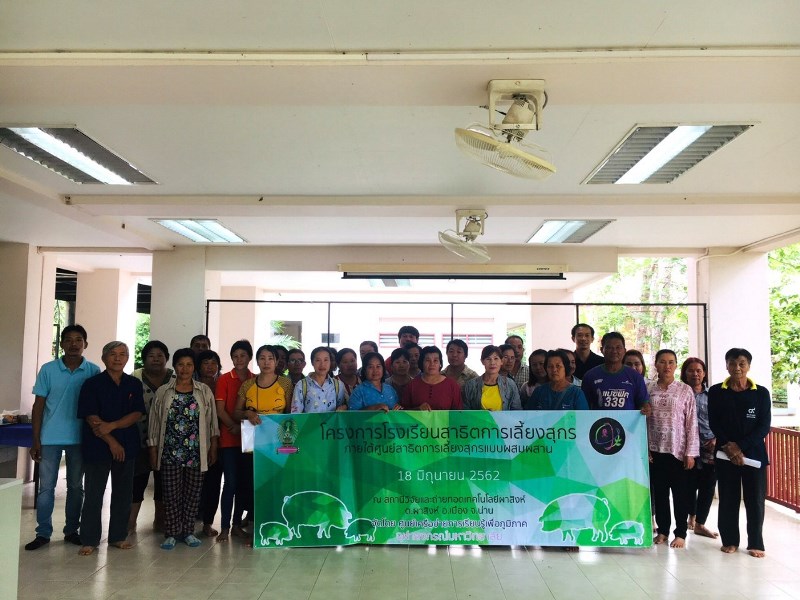
BY
Center of Learning for the Region, Chulalongkorn University
Faculty of Veterinary Science, Chulalongkorn University
Related articles:
Others
Civic Engagement 4.0: Justice, Dignity, Sustainability
Recognizing sustainability is attainable only through active participation of citizens and radical changes in ways we think and act, Chulalongkorn University collaborated with civil society, local governments, academic institutions of the region and beyond, in launching this regional platform.




